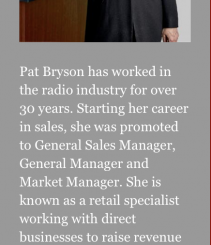Content from BPRThe recent death of Queen Elizabeth II is an important reminder of the sensitivities the media faces in dealing with such news. It’s not just the way the announcement is made and the commentary following but also, depending on the station’s format, the surrounding content.If anyone in Britain was prepared for the emotional fallout of the death of Queen Elizabeth II, it was the country’s radio announcers and producers.According to Ben Cooper, Chief Content and Music Officer at Bauer Media Audio UK at the time of the Queen’s death, blue “Obituary Lights” flashed in radio stations around the country. Long-standing protocols, known as “Obituary Plans,” quickly kicked into gear. There would be no more advertisements. No on-air competitions. Prepared playlists flooded the airwaves.As the country was still processing the death, British radio had already turned down the dial on the fun and begun providing listeners with more sombre sounds: Coldplay’s The Scientist, for example, Simon and Garfunkel’s Bridge Over Troubled Water, The Cars’ Drive and a lot of Adele, according to Cooper.At least they were well prepared. However, there have been many occasions where radio stations have failed to put systems in place to prevent insensitive content going to air.Recently in Australia, a leading and popular sporting identity committed suicide. He was loved by sporting fans, players and the media.Naturally, radio presenters in his home town were discussing the tragedy on air.So picture this. The presenters, some of whom were his friends, on one station (a Talk station) were discussing the topic interspersed with music (a recent addition to the Talk station). However, no one bothered to check the logs to see if the songs were appropriate for the topic.The songs played during the discussions included Gloria Gaynor’s “I Will Survive”, Australian Crawl’s “Downhearted” and Queen’s “Don’t Stop Me Now”.To give the presenters credit, they didn’t refer to the songs in any shape or form. But surely someone at a programming level should have made the call to check the logs to ensure that every song would fit with what was one of the day’s big topics. Or even drop the songs entirely……as mentioned, music is a new addition to the format.It’s like the time an announcer was doing an Outside Broadcast to raise funds for bushfire victims. The bushfires were some of the worst in that country’s history. The announcer was doing the live top of hour over a song intro per usual. A good, heartfelt top of hour….only trouble is the song was Billy Joel’s “We Didn’t Start The Fire”. Many other stations during this time put songs that mentioned fire, burning etc on hold…..”I’m on Fire”, “Burning Down the House” and the aforementioned Billy Joel song.Then there’s the other side of the coin where quick thinking by an announcer stopped an inappropriate song going to air. As mentioned above, most UK radio stations have an “Obituary Plan”, which is a plan of what to do in the unexpected death of someone prominent. It includes a list of “appropriate music” to play. The announcer in question was solo, presenting a networked show in the early hours of Sunday 31st August 1997, when the “Obituary” alarm was triggered around 4:30 am in response to the death of Diana, Princess of Wales. The announcer opened the Obituary folder to find out what “appropriate” music to play, and the first track suggested was “Drive” by The Cars! As he ran down the list, almost every song had some sort of inappropriate reference to driving, accidents, broken hearts. With about 90 seconds to spare before making the official announcement and then playing the first song, he decided “Candle in the Wind” by Elton John was the least-worst choice given the circumstances.A good call!We all know mistakes happen. But preventable mistakes such as those above should not.Check the logs…….. and know the lyrics to the songs.Events like these don’t happen often. However, a misplaced song can damage your station’s reputation across all media platforms.By David Kidd, BPR […]






